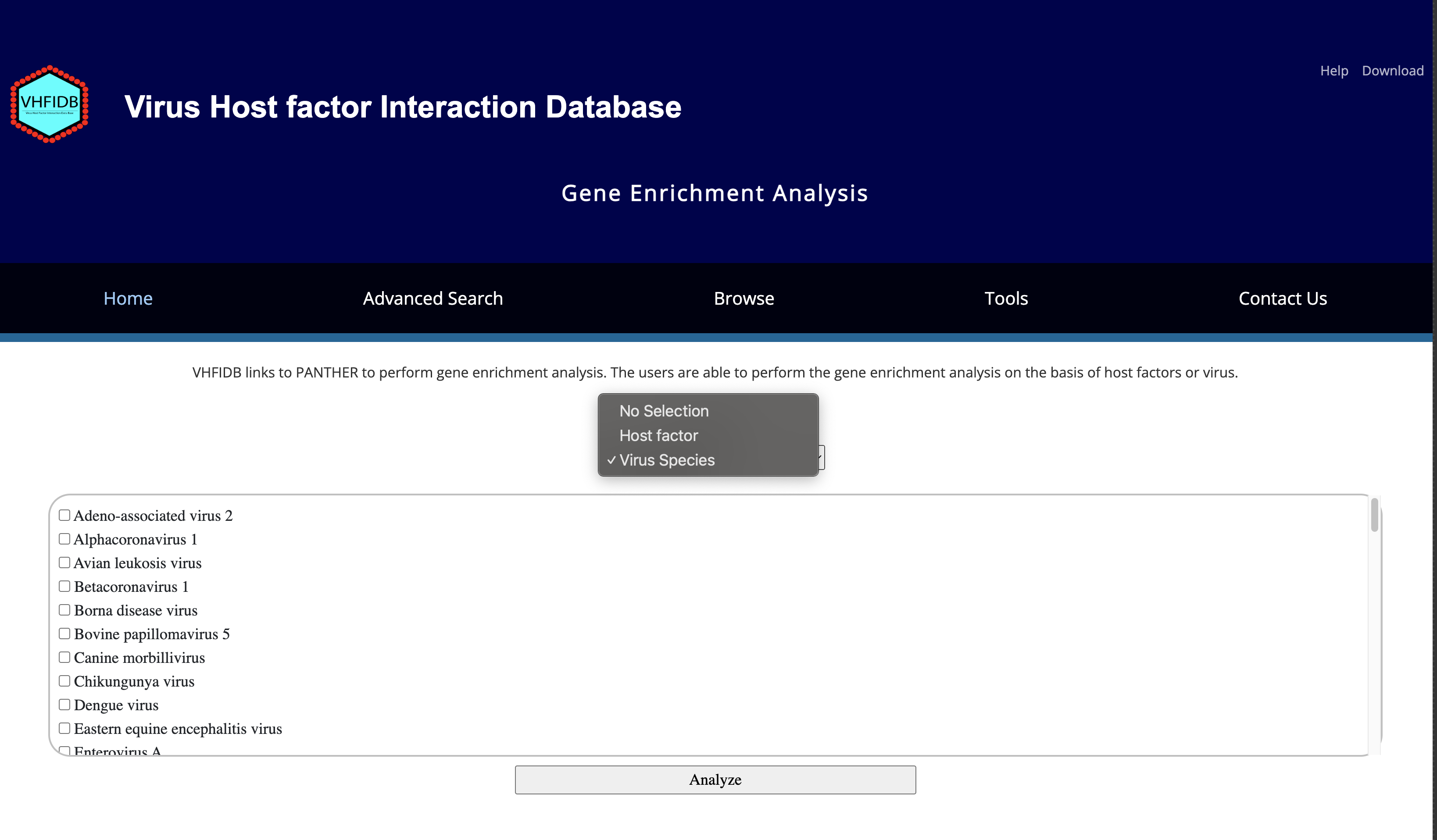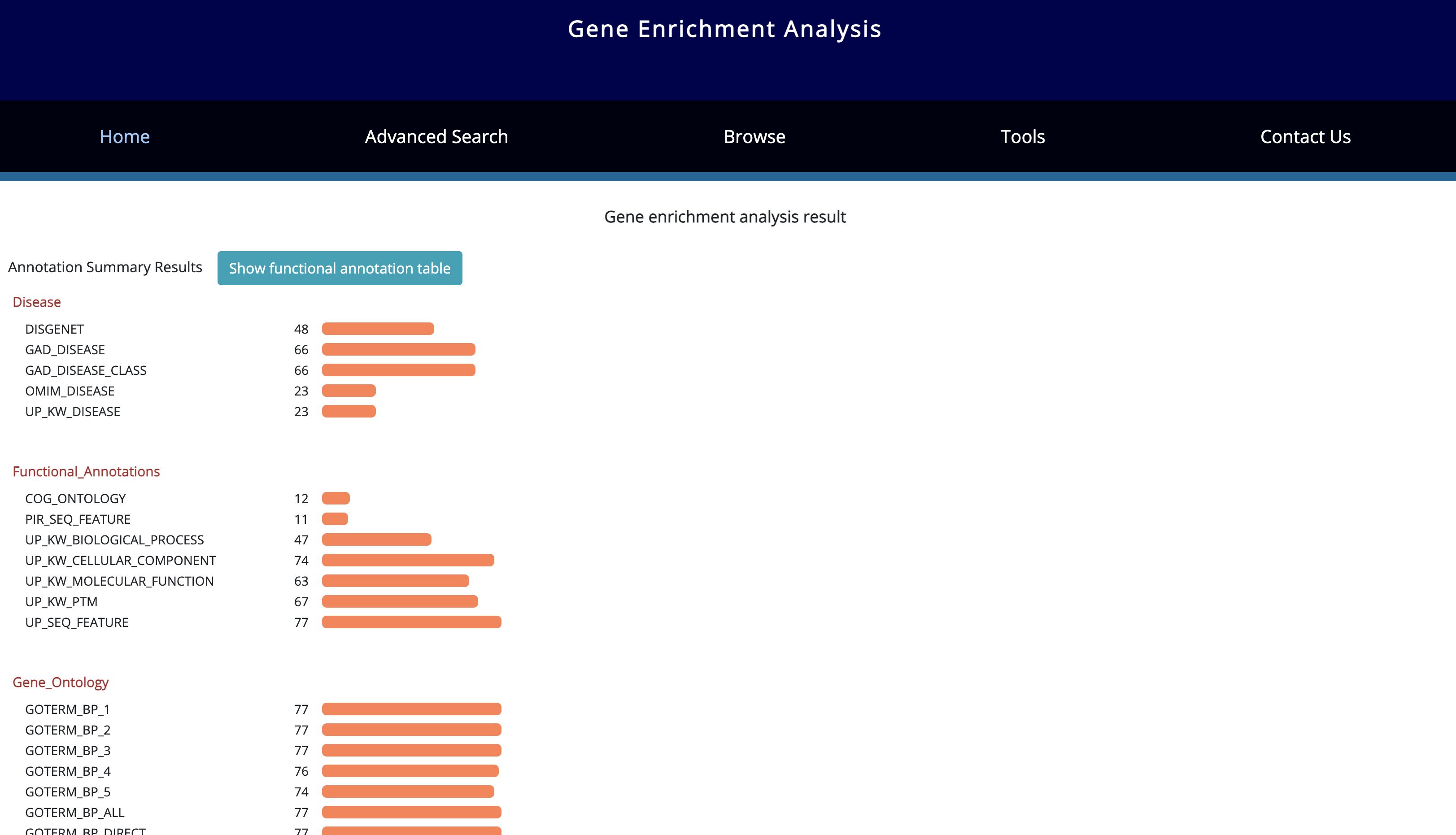
Search :
VHFIDB supports search based on six types of parameters. The User can enter the desired keyword in the given box and can execute a search based on any of the given fields specifically VHFIDB-ID, host factor name, virus name, virus family name, UniProt id and PubMed id.

Advanced Search :
The user can search the host factors based on Baltimore virus classification in the advanced search tool. User can select the virus class, virus family, virus genus or virus species for the further selection of host factor.

On selection of virus class, the user is provided with a drop-down menu which provides a list of seven classes of viruses classified on the basis of the genetic content. The user can select any one virus class of their choice.

Upon selection of the virus class, the user needs to move forward and select the virus family from the drop-down menu under the Select Virus Family caption. This provides the user with the list of all the virus families under the particular virus class.
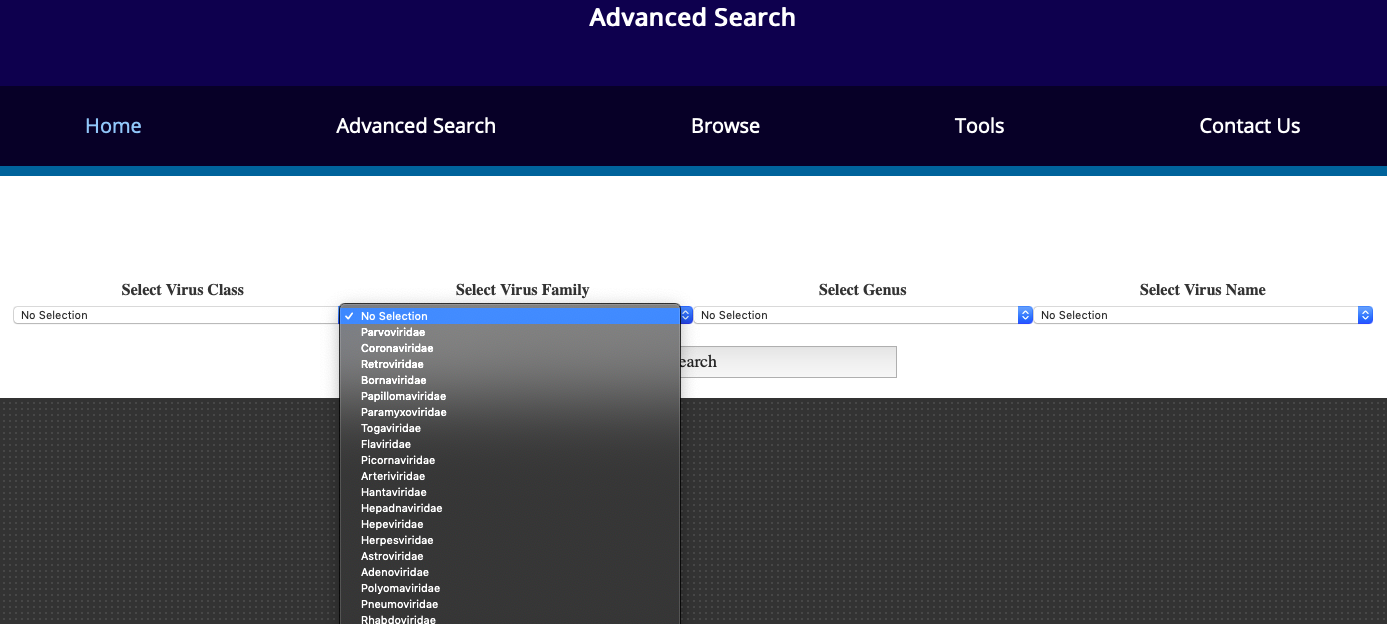
Then the user can select the particular genus of the previously selected virus family.
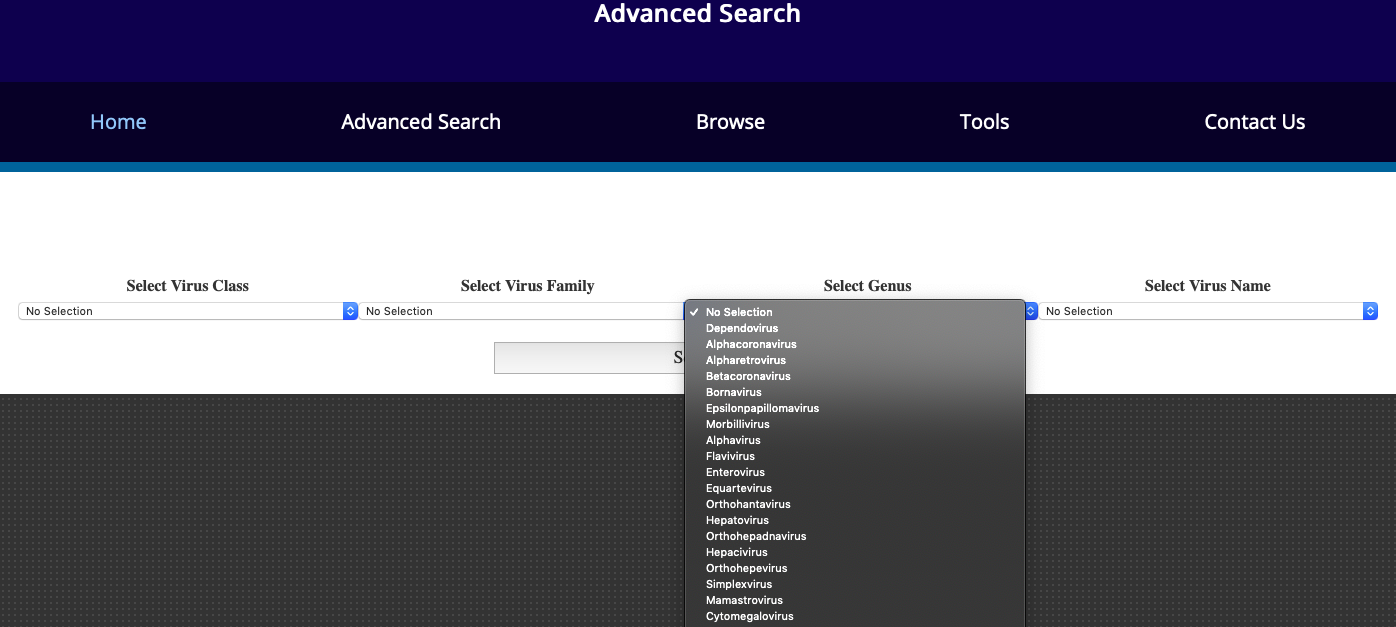
And finally the user can select the desired virus belonging the particular genus for which the host factors are searched.
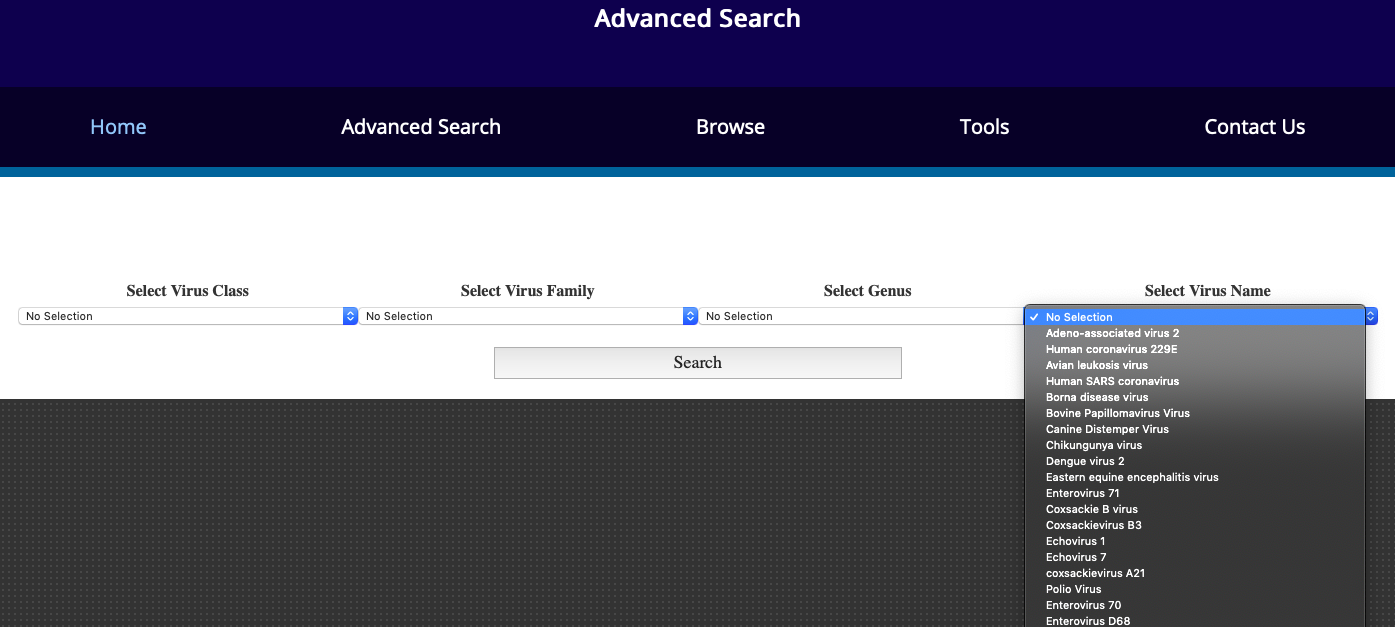
Browse :
In the browse part, the user can see all VHFID entries. All viruses that have validated VHF information in VHFIDB are presented according to the Baltimore classification (e.g., class, family, genus, and species). The browse page displays all the virus classes with the list of virus family below.
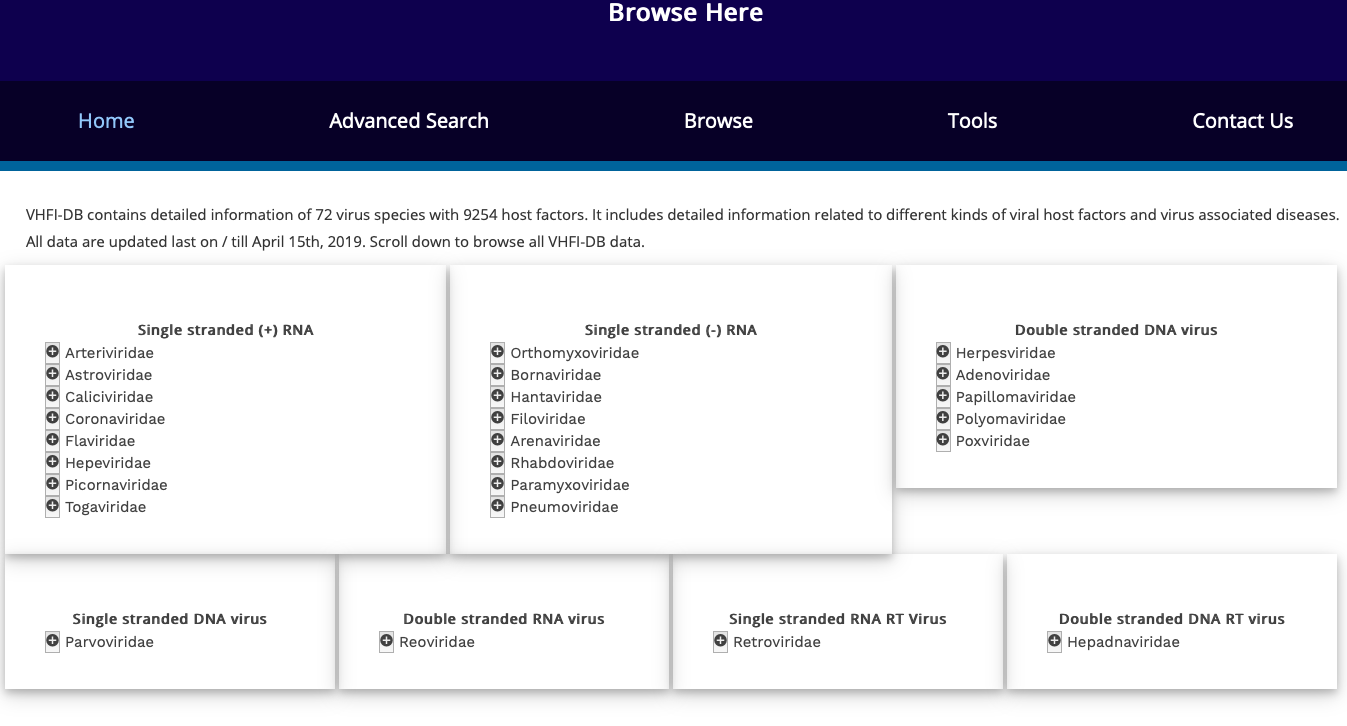
Data Display :
The result page will display different areas of the database. The results obtained from browse/search/advanced search can be ordered by clicking on the column header, and filtering can be done by typing in the boxes given under the headers.
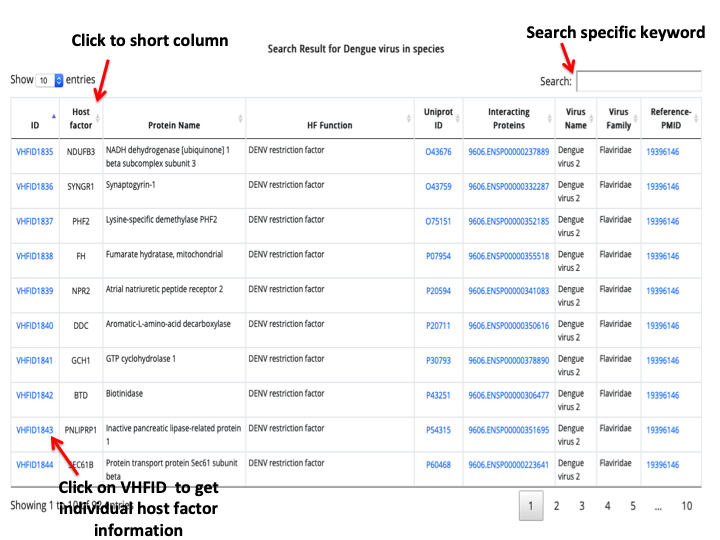
VHF pathogen network :
VHF Pathogen Network Analysis Tool can be utilized for visualizing molecular interaction networks. Analysis can be performed in two ways; either by selecting the Host Factor name or by selecting the virus name.

The two options namely, host factor and virus name provide the user with drop-down menus to select from.

Finally on selection of either of the option, the molecular network interaction is displayed.
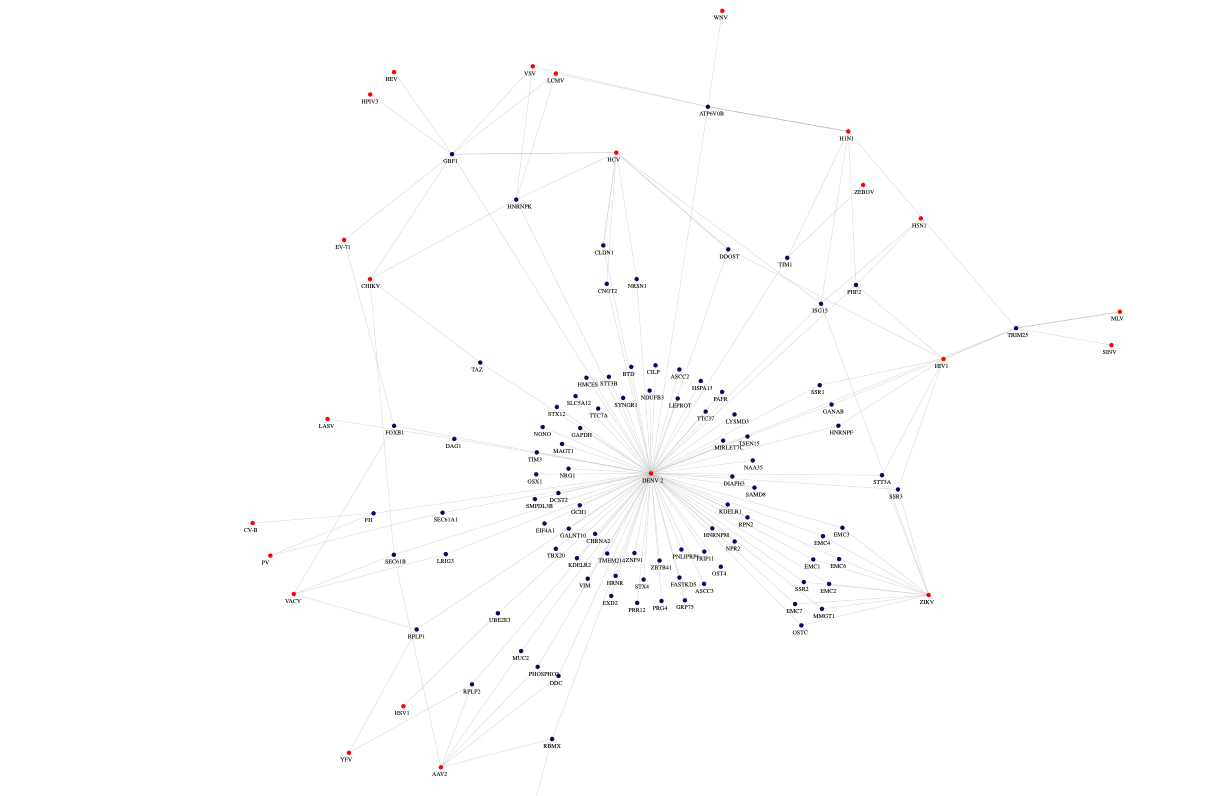
VHF Overlap Analysis :
A VHF overlap analysis represents the common VHF genes of viruses in a heatmap representation. The heatmap can be analyzed between different virus classes, the virus families or between the species of viruses.

The final result shows the total number of host factors common between two virus classes.
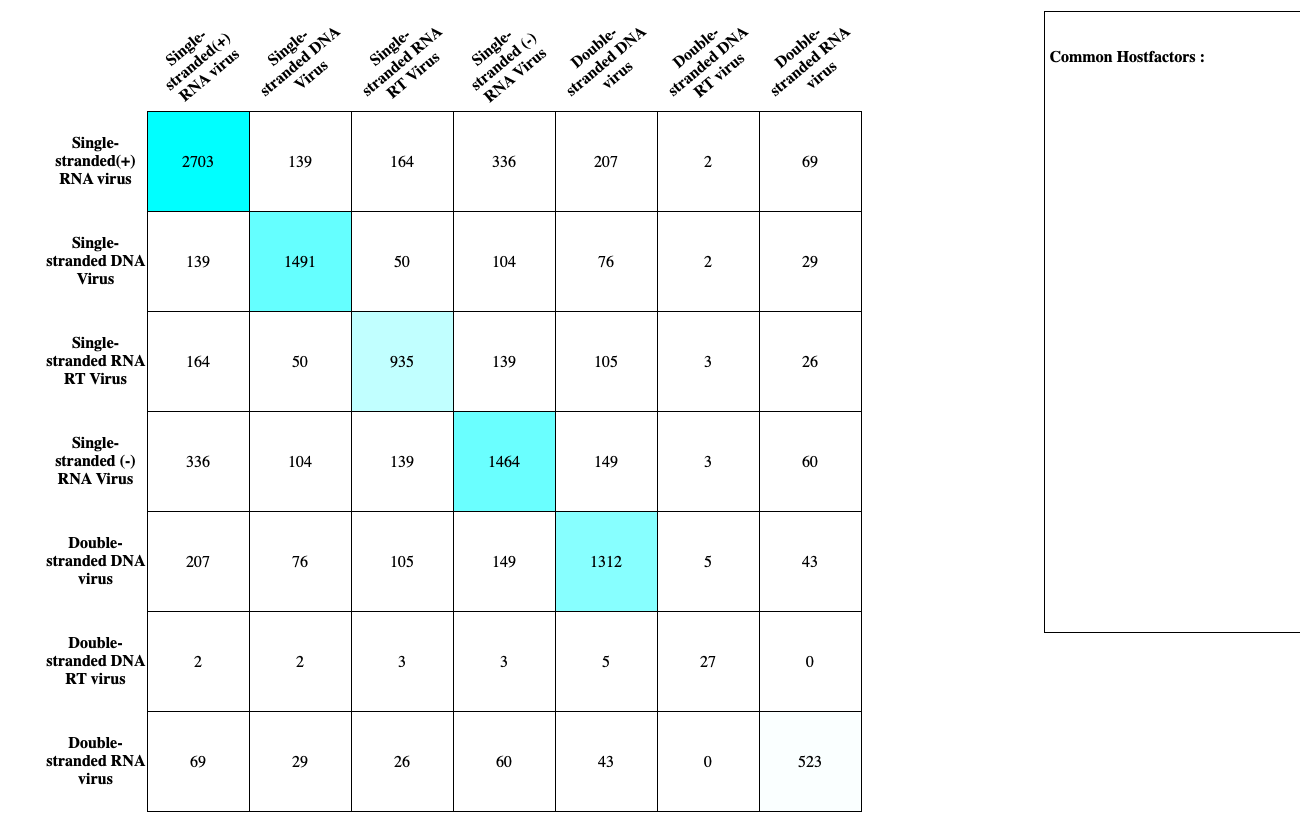
The final result may also shows the total number of host factors common between two virus classes.
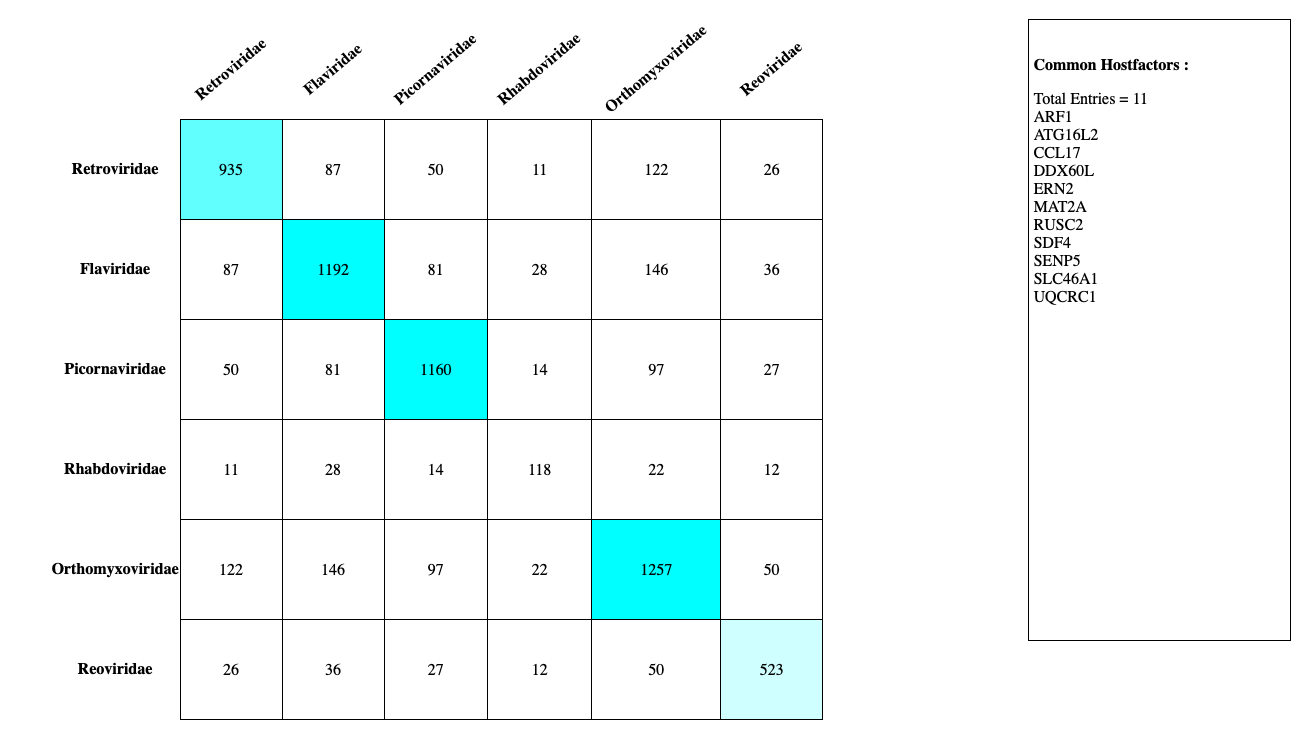

Gene Enrichment Analysis :
VHFIDB links to the PANTHER database to perform gene enrichment analysis. The users can explore the VHF gene enrichment analysis based on host factors or virus species.
